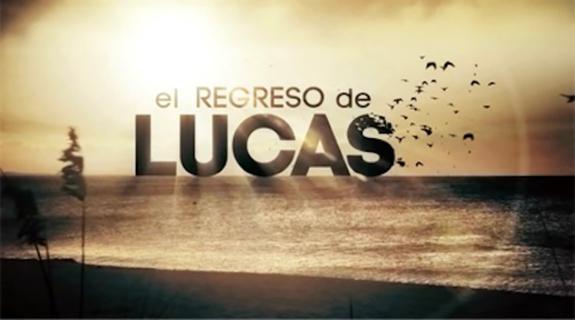Tragedy, family breakdown and despair combine to create the mystery surrounding El Regreso de Lucas (The Return of Lucas), a suspense-filled story in which the disappearance of Lucas—the eldest son of a wealthy family—develops into a thrilling drama.
This first co-production between Peru’s top television network, América Televisión, and Argentine channel and content production company Telefe, is scheduled to air November 9 at 9:30 p.m. on América Televisión.
The series is the first from Lima’s Pachacamac studios, América Televisión’s new production center that intends to devotes 30 percent of its space to co-productions.
According to América Televisión CEO and CCO Eric Jurgensen, El Regreso de Lucas was born thanks to a long-standing relationship between Telefe and América TV that finally crystallized with their first co-production.
The one-hour, 60-episode series was shot in Peru and written in Argentina. A team of screenwriters at América Televisión reviewed the script to ensure that the final product “primarily works well on both networks, but that, at the same time, draws international attention,” says Jurgensen.
He adds that the series “is proof that great productions can be made in Peru, since our country has really good talent, both on-screen and behind-the-scenes, and we have an impressive competitive advantage in production costs, in addition to the neutral Spanish accent of our actors.”
América Televisión wanted to introduce viewers to the hypothetical experience of the unexpected loss of a family member. With that in mind, the network created a campaign that revolves around family tragedy, and that is independent from the promotional strategy Telefe will develop in the future for its own audience.
Giannina Scavino Varillas, promotions manager at América Televisión, says that during the pre-launch campaign, “we want viewers to relate to the despair of these parents whose child has gone missing and who do not know what happened to him. We want to generate curiosity about this tragic situation that can unfortunately happen to anyone.”
The conceptual campaign uses promos to gradually reveal new clues of the story. A first piece (above) shows the disappearance of Lucas, the family’s eldest child, who at the age of four vanishes while playing on the beach.
The second piece reveals a hypothesis of premeditated abduction and that “gets parents and spectators further distressed and intrigued,” says Scavino.
The third spot uncovers how this disappearance that has remained unsolved for more than 20 years has affected the entire family, with the mother portrayed as an obsessed woman who has neglected her other children.

The fourth promo introduces the cast, presenting the stars that play the parents — Colombian actress Ana María Orozco, known for her role as Betty in Yo soy Betty, la fea (the original version of Ugly Betty) and Peruvian actor Salvador del Solar — among a total cast composed of 25 Latin American actors.
At this stage, the strategy began including simultaneous promotions in other media, such as radios, newspapers and magazines.
The campaign is also complemented by other pieces, such as a video that presents the series’ theme song, Hasta que regreses, by Mexican pop/rock duo Ha*Ash, and a clip titled “Mama Mix,” in which the character of Elena — Lucas’ mother — makes a confession to the camera, recounting the bitterness of 20 years of loss and anguish.
Many of the promos end with the stars calling out: “Let’s get closer together.” This phrase, América TV’s new tagline, shows that “the campaign is in line with our new image,” says Scavino. The pieces also include the recently launched new logo, designed while keeping the concept in mind that television joins us together.
For the pieces’ graphic style, Scavino says “we are trying not to be too invasive, so as to keep in line with the initial idea of the series. The images have been left clean, so that they maintain their original color treatment.”
Also, in all the promos “we have tried to respect the unique look of the TV series, which has been designed to transmit a constant feeling of nostalgia and intrigue.”
The logo evokes a grim feeling, with a flock of birds flying away from the letters against the background of a sunset; the birds break the letters just as the characters break their family ties.
Although all on-air spots will also be delivered online, Scavino says for the digital strategy “we will launch short and informative promotions, because our [online] audience is much younger.”
Some of the marketing assets include tune-in spots of the actors inviting viewers to watch the premiere; coordination with the series’ stars to get them to tweet and post on social media; live interviews with the cast in Peru streamed on Facebook and Twitter; descriptions of the characters supported with graphics and the use of hashtags #ElRegresoDeLucas and #EstrenoERDL “so that they become trending topics before and during the premiere,” says Scavino.
All in all, expectations are high for the series’ debut, says Jurgensen. “It’s the first important co-production [with Telefe] for a channel with very stable leadership, so we really expect El Regreso de Lucas to be well-received and to contribute to the ongoing success enjoyed by our network.”
RELATED: ‘El Regreso de Lucas’: Un Drama Familiar en Clave de Thriller
Tags:













































__twocolumncontent.jpg)











